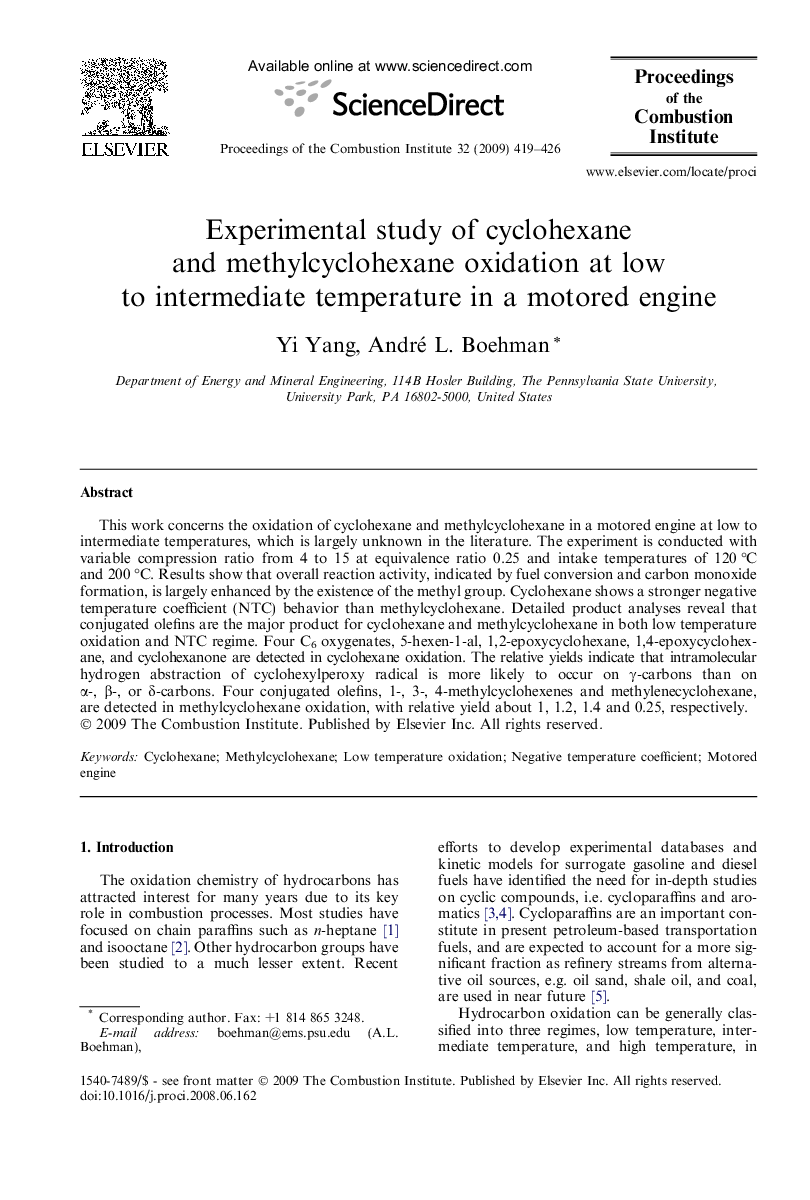| Article ID | Journal | Published Year | Pages | File Type |
|---|---|---|---|---|
| 6679432 | Proceedings of the Combustion Institute | 2009 | 8 Pages |
Abstract
This work concerns the oxidation of cyclohexane and methylcyclohexane in a motored engine at low to intermediate temperatures, which is largely unknown in the literature. The experiment is conducted with variable compression ratio from 4 to 15 at equivalence ratio 0.25 and intake temperatures of 120 °C and 200 °C. Results show that overall reaction activity, indicated by fuel conversion and carbon monoxide formation, is largely enhanced by the existence of the methyl group. Cyclohexane shows a stronger negative temperature coefficient (NTC) behavior than methylcyclohexane. Detailed product analyses reveal that conjugated olefins are the major product for cyclohexane and methylcyclohexane in both low temperature oxidation and NTC regime. Four C6 oxygenates, 5-hexen-1-al, 1,2-epoxycyclohexane, 1,4-epoxycyclohexane, and cyclohexanone are detected in cyclohexane oxidation. The relative yields indicate that intramolecular hydrogen abstraction of cyclohexylperoxy radical is more likely to occur on γ-carbons than on α-, β-, or δ-carbons. Four conjugated olefins, 1-, 3-, 4-methylcyclohexenes and methylenecyclohexane, are detected in methylcyclohexane oxidation, with relative yield about 1, 1.2, 1.4 and 0.25, respectively.
Keywords
Related Topics
Physical Sciences and Engineering
Chemical Engineering
Chemical Engineering (General)
Authors
Yi Yang, André L. Boehman,
